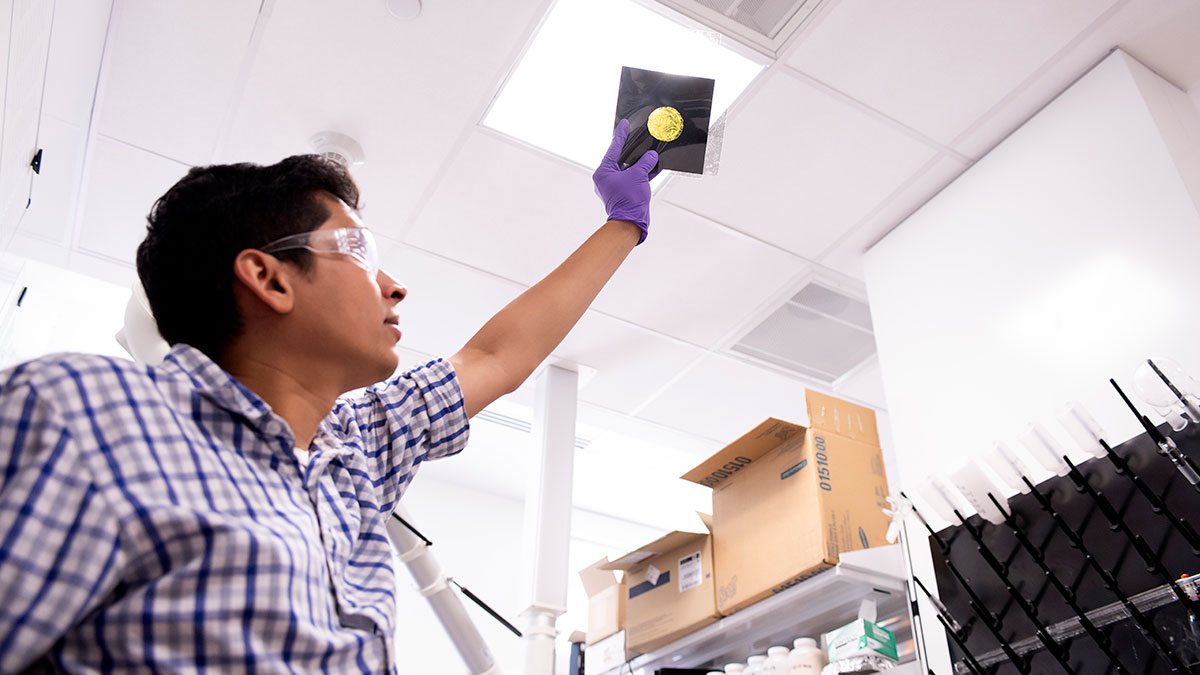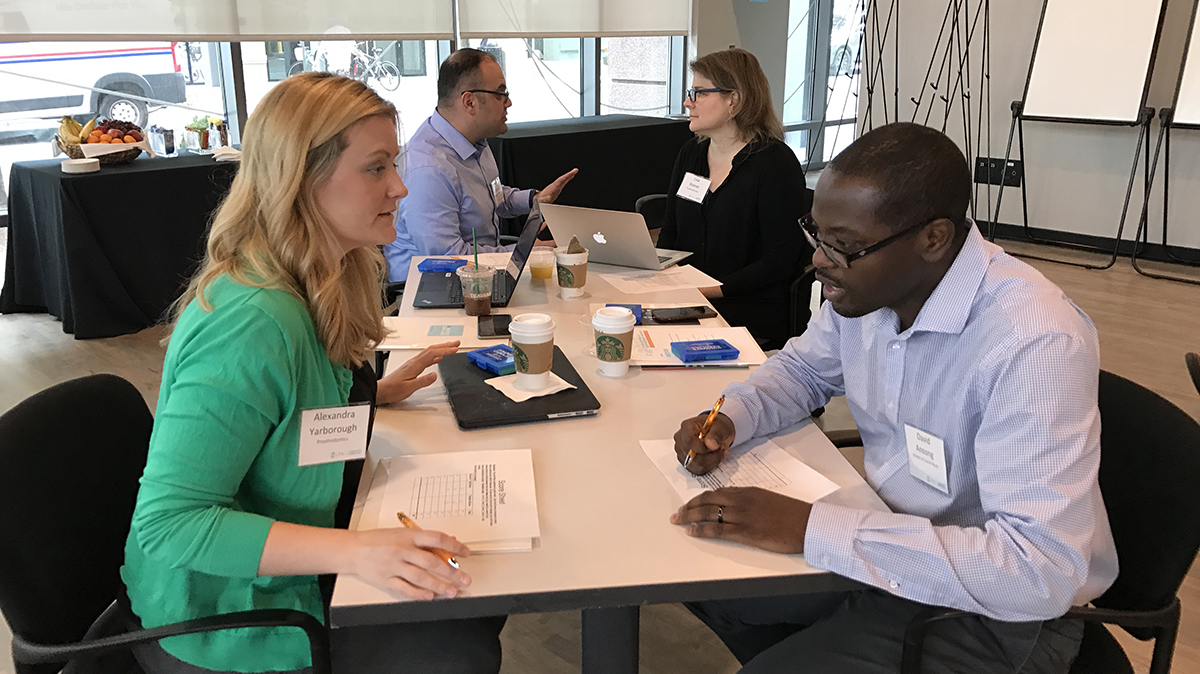Clean water for all
Carolina's Theo Dingemans and his Sustainable Access to Clean Water Creativity Hub team are changing the way water is made safe for populations around the world.

Theo Dingemans, principal investigator for the Sustainable Access to Clean Water Creativity Hub and professor of applied physical sciences, along with a team of faculty and researchers from UNC-Chapel Hill and the University of Texas at Austin, is developing an innovative, affordable membrane-based water purification tool. The team is designing the new technology to safely remove a broad range of water contaminants.
“We are going after the holy grail where we design a membrane that can be used for desalination,” Dingemans said. “This new type of membrane can operate at lower energy and can produce safe drinking water at less than $1 per cubic meter of seawater. At the rate we’re consuming freshwater, we need technologies that are affordable and robust.”
Building on graphene and graphene oxide nanocomposite membrane technology developed by the Dingemans lab, the team aims to develop new filters that make water purification more energy-efficient. The new technology will lay a foundation for large-scale, affordable membrane production and be used for a whole range of pollutants – including removal of heavy metals that can be extracted and then reused.
As populations grow globally, clean water is becoming increasingly scarce. In fact, the Centers for Disease Control estimates more than 660 million people worldwide lack access to an improved source of water. With the limited availability of freshwater on the planet, transforming salt water into drinking water is more important than ever. However, current technologies that desalinate water are expensive and can be energy-intensive.
A research team at the University of North Carolina at Chapel Hill is tackling this challenge through the Creativity Hubs, an evolving virtual research network that concentrates talent and resources on bold ideas for defined periods of time — free from typical organizational boundaries. The goal is to move new discoveries and ideas into practice. The Creativity Hubs initiative was developed by the Office of the Vice Chancellor for Researchto foster fluid, cross-disciplinary research. The initiative establishes campus networks that nurture research innovation and risk-taking and promotes a pervasive culture that drives discovery and curiosity.
Creativity Hubs bring problem solvers together
“It’s a complicated, challenging problem for our team,” Dingemans said. “From chemistry to physics to engineering, if we all team up, we have the expertise to tackle this. Independently, we wouldn’t be as successful. It would be hard to go out and apply for a grant that would allow us to collaborate on this problem from day one.”
Dingemans and his team are a great example of how the Creativity Hub should work, bringing faculty together from different disciplines to solve a problem that will impact the world. The Sustainable Access to Clean Water Creativity Hub team is made up of polymer chemists, membrane engineers, computational modelers and engineers from the College of Arts & Sciences’ applied physical sciences and mathematics departments and the Gillings School of Global Public Health. The team also receives support from the Office of Technology Commercialization, which helps it identify commercial uses for the technology.
As the inaugural winner of the Creativity Hubs, the team was able to get the technology off the ground with a $250,000 award, plus $250,000 in additional funding available in year two of the project.
“This hub is an interesting opportunity. Coming from different disciplines, we can all meet in one room to tackle this challenge. In the past, this was not possible,” Dingemans said. “The real challenge has been to design a common language. Chemists speak a different language than membrane engineers than mathematicians. Right now, we’re trying to develop a common language on the problem and at what level do we need to design and create understanding.”
Dingemans’ team is currently working on patents for the separation technology. As part of the process, it discovered other applications and is developing tools for membrane design that can be used in a much broader context.
As part of Dingemans’ innovation journey, he participated in the Chancellor’s Faculty Entrepreneurship Workshop, an annual, invitation-only event for UNC-Chapel Hill faculty hosted by Innovate Carolina. Nominated by deans, workshop participants are invited based on the promise they show toward entrepreneurial thinking.
“For me, it was really wonderful to be at the workshop and hear what other companies my colleagues are starting. That’s stimulating and motivating to hear,” he said. “My initial goal as an academic was to be a scientist and publish papers. Along the way, my goal changed. I wanted to do science that makes a difference in the real world. Having access to colleagues who have gone through this is extremely helpful in pushing people over the doorstep. It helps them think about their science inventions in a boarder context.”
Convergent science and a collaborative spirit
Through the Faculty Workshop and the Sustainable Access to Clean Water Creativity Hub, Dingemans sees firsthand the value of how academics, scientists and researchers from multiple disciplines can collaborate and solve a problem that will benefit people around the world.
“I think the Sustainable Access to Clean Water Creativity Hub is a great example of convergent science. It’s important and will be important in the future at universities that stimulate, promote this and create the environment and infrastructure,” he said. “To have the patience to have a group of people define a problem, break it down into parts and think through solutions is going to be incredibly important in the future. Carolina will play a big role in this.”
As Dingemans continues his work through the Creativity Hub, he encourages other faculty to pursue their ideas through conversations and connections across the University.
“What I’m really excited about is that Carolina is in a unique spot. The overwhelming part of the academic population here is willing to collaborate, and the threshold for working and talking with people is incredibly low,” Dingemans said. “Those are important ingredients to start thinking about when you practice convergent science. You need to have that collaborative mindset in your DNA, and Carolina has that. That’s an important aspect that will make this a success here.”




